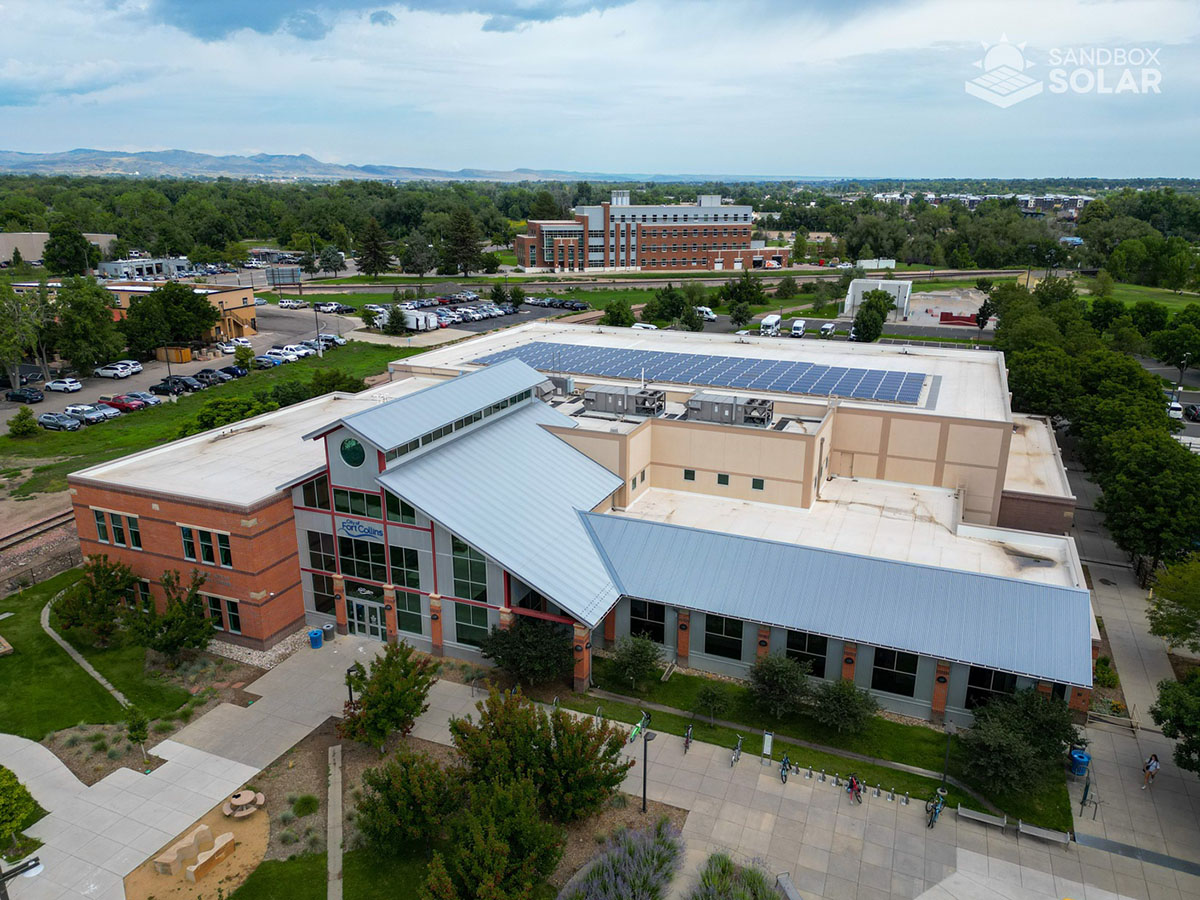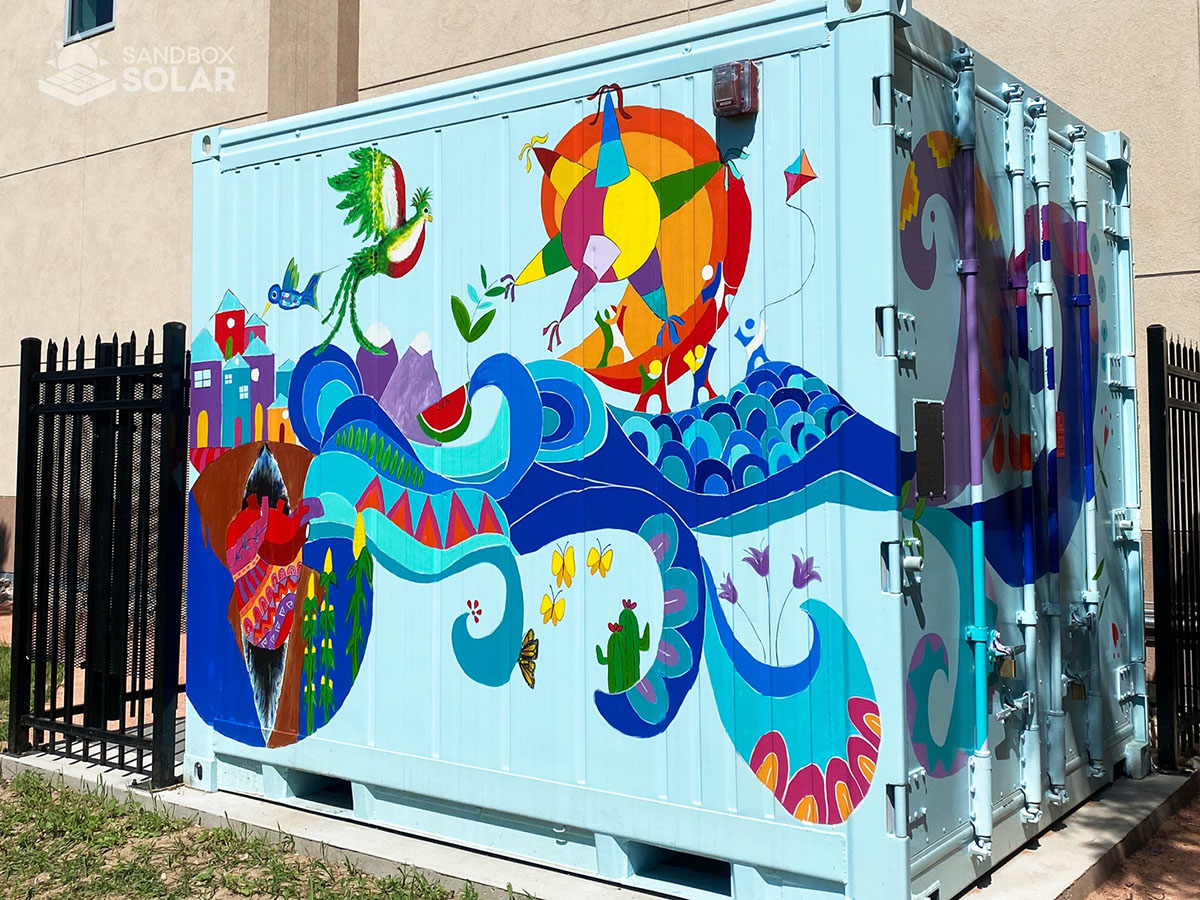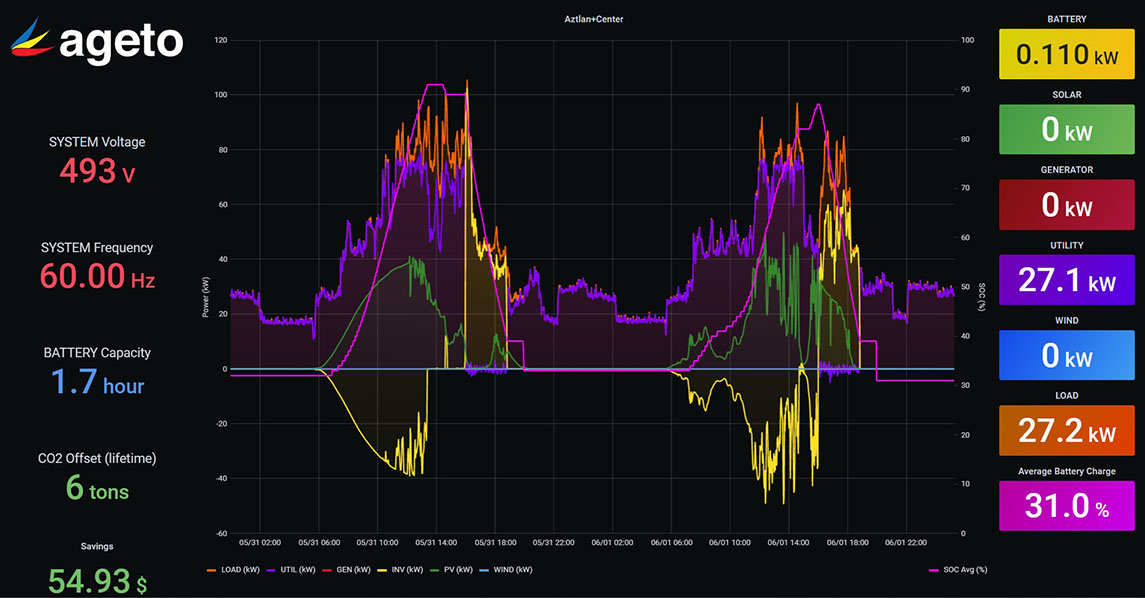For two decades, the city of Fort Collins, Colorado, and its municipal utility have been exploring technologies that would enhance grid resilience and contribute to the city’s carbon reduction goals. As a part of this effort, Fort Collins recently commissioned a new microgrid at a recreational facility. The microgrid is designed to provide reliable electric power to the recreational facility when the grid is unavailable and provide cleaner electricity and grid stabilization services under normal grid operating conditions. The project will also enable Fort Collins Utilities to evaluate smart grid innovations that will guide future energy investments.

The role of energy in the Northside Aztlan Community Center
Jointly owned by the City of Fort Collins and Fort Collins Utilities — a municipal utility providing water and electrical services — the microgrid-powered Northside Aztlan Community Center could serve as a resilient hub in emergencies. Partially funded by Colorado’s Department of Local Affairs, the microgrid was commissioned in April 2023 and is designed to provide backup power during the fire season to enable the center to host base operations for first responders. Although it isn’t intended to provide emergency housing, the recreation center can back up critical loads so the community can access reliable power and sanitary facilities during the day. The Aztlan Center is already a LEED Gold certified building, designed to have a low environmental impact.
Fort Collins created the microgrid by adding 120 kilowatts (kW) of Kore Power lithium-ion batteries to an existing 54 kW solar photovoltaic (PV) rooftop array. The city also upgraded the electrical equipment to include a SolarEdge three-phase inverter and three 40kW power converters specifically designed for grid-tied and microgrid energy storage applications.
Using HOMER® Grid software from UL Solutions, Ageto Energy modeled the project to determine the optimal system size for the loads at the community center and calculate how the batteries could meet additional requirements for demand response and peak shaving. Ageto designed and currently operates the control system, which will issue commands to discharge the batteries and perform other system control functions, according to Ageto Energy Application Engineer Laura Williams.

City resilience strategies drive investments in new microgrids
Like many communities across the U.S., Fort Collins — located at the base of the Rocky Mountains — has experienced increased natural disasters and impacts from extreme weather in recent years, including multiple wildfires and devastating floods.
Fort Collins Lead Climate Specialist Katy McLaren said the city has developed plans to enhance short and long-term resilience, collaborating with other cities in Larimer County to define the most critical priorities. McLaren was one of the authors of the Colorado local affairs grant that funded the Aztlan microgrid.
Renewable, non-carbon energy sources have provided 49% of Fort Collins’ electricity since 2022, according to Fort Collins Utilities. The city adopted a goal of 100% renewable electricity by 2030, while the Platte River Power Authority, the city’s wholesale electricity provider, has adopted similar goals. McLaren said it’s essential to use electricity more efficiently and generate it renewably to meet those goals.
The new microgrid at Northside Aztlan Community Center meets the demands of the resilience strategy and helps advance environmental and economic improvements in the community. However, according to Fort Collins Energy Manager Stu Reeve, its most valuable contribution may be the information it provides to the utility on the procedures and equipment it is testing.
Islanding from the grid, demand response and coincident peak shaving
“We have aggressive climate action goals,” said Reeve. “We’re always looking at how we can electrify, move away from fossil fuels and make our buildings more interactive.”
During normal, non-emergency operations, Reeve explained that the Aztlan microgrid will provide demand-response grid-stabilization services by discharging the battery in response to the utility’s signals. The utility will analyze how well it can control the batteries remotely.

The utility will also discharge the Aztlan batteries over several instances to reduce electricity use during expensive periods. That will help with the design of future tariffs and services that involve energy storage. “We are acting as the owners of this building, using the battery to complement the solar resource. We have complex utility rates in Fort Collins, so we’ll see how much the battery can reduce those costs,” Reeve said.
“One example is to discharge the battery during peak demand events that occur in the summer between 4:00 p.m. to 7:00 p.m.,” he explained.
Another example is managing peak demand charges based on the highest demand in a given month, averaged over a fifteen-minute period. These rates have ratchets that can lock in a high-demand event over the next 12 months.
Ageto Energy uses HOMER Grid modeling software to predict the building load and establish realistic demand limits. The Ageto controller is designed to automatically discharge the battery when the load threatens to exceed those limits. Ageto will model the Aztlan microgrid annually to monitor its performance and determine if changes to the demand limit are required.

Additionally, Fort Collins Utilities will use the battery to minimize the monthly “Coincident Peak Charge,” which reflects the highest electricity demand in the entire Platte River Power Authority system, usually at the end of the day during the hottest periods of the summer.
Studying microgrid transitions on and off the grid
Reeve said the Aztlan project is designed so the utility can study the islanding process and determine whether the microgrid detaches and reconnects to the grid seamlessly. The Ageto Energy Protective Relay Cabinet (PRC) is one piece of equipment the utility will evaluate.
The PRC interfaces with the Ageto controller, which can then activate renewable resources, simplifying the process as the microgrid transitions on and off the main grid. Since microgrid technology is relatively new, Ageto Energy Founder Mike Murray said many developers struggle to design custom devices that can manage smooth interconnection and islanding from the grid.
Building on Fort Collins’ history of energy innovation
According to Reeve, key lessons from the Aztlan microgrid will include calculating demand-side savings and understanding best practices and technology for utility control and dispatch of batteries in a demand response program. Another significant learning is on energy software, including the modeling and controls delivered by HOMER and Ageto software, respectively.
Reeve said it’s important that energy managers learn to model projects to calculate peak demand reduction and return on investment accurately. He concluded that energy managers need tools to manage grid infrastructure better so it can be designed to incorporate more renewable energy.
Future Fort Collins projects
Although not every experiment has succeeded, Reeve believes firmly in Fort Collins’ commitment to ongoing research and pilot projects designed to advance understanding of smart grid technologies and the transition to clean energy.
“There are always lessons learned that we could carry forward and at least not make the same mistakes twice,” he said.
Next up in the city’s carbon reduction plans is electrifying the bus system.
“We have four electric buses up and running,” Reeves said. “As the number of buses increases over time, we’ll need to keep analyzing the charging infrastructure to determine our best options to offset this large-scale electric use.”
As the city of Fort Collins and its municipal utility continue enhancing grid resilience and reducing carbon, the Northside Aztlan Community Center microgrid stands as a new and essential addition to a much larger and more ambitious plan that will continue to evolve.

UL Solutions HOMER Grid is a market-leading solar-plus-storage software tool for designing grid-tied distributed energy systems. With an integrated utility tariff database and a new module for electric vehicle charging stations, it optimizes peak shaving to help commercial and industrial utility customers lower their demand charges. HOMER Grid can model projects with wind and combined heat and power as well as islanded systems, helping users improve their resiliency. Explore your opportunities with HOMER Grid during a complimentary trial. Learn more and download your complimentary trial.

Hello,
I learned about Homer via the N Azatlan center project. In preparation of writing the 2nd Edition of Ecosystems as Models for Restoring our Economies (to a sustainable state), I’d like to interview one of the technical leads at Homer to learn more about the constraints/opportunities and future of microgrids in local settings. Please let me know if you have time in the next week for a virtual meeting.
Kind regards,
John: 970-420-7346